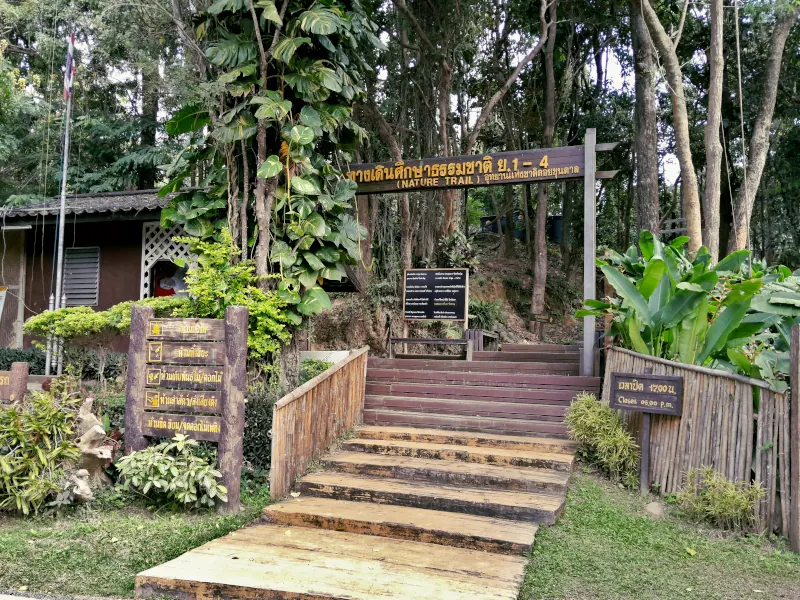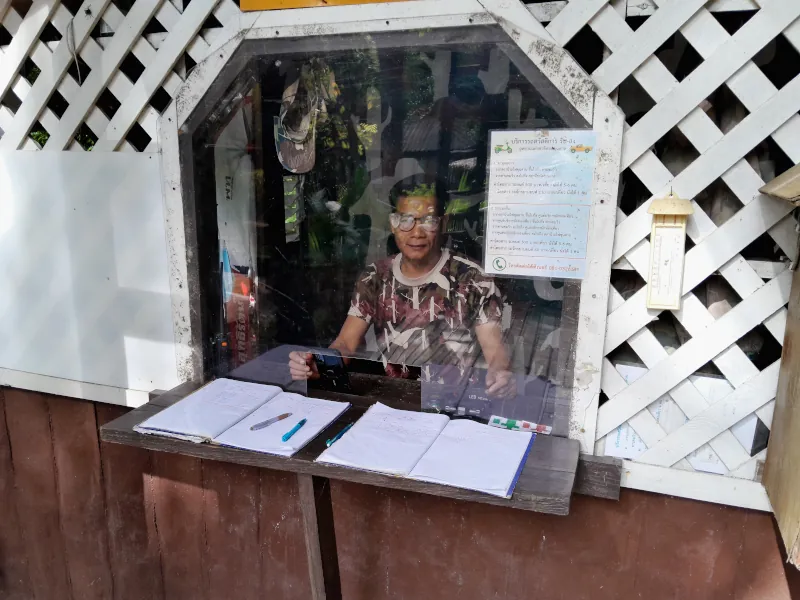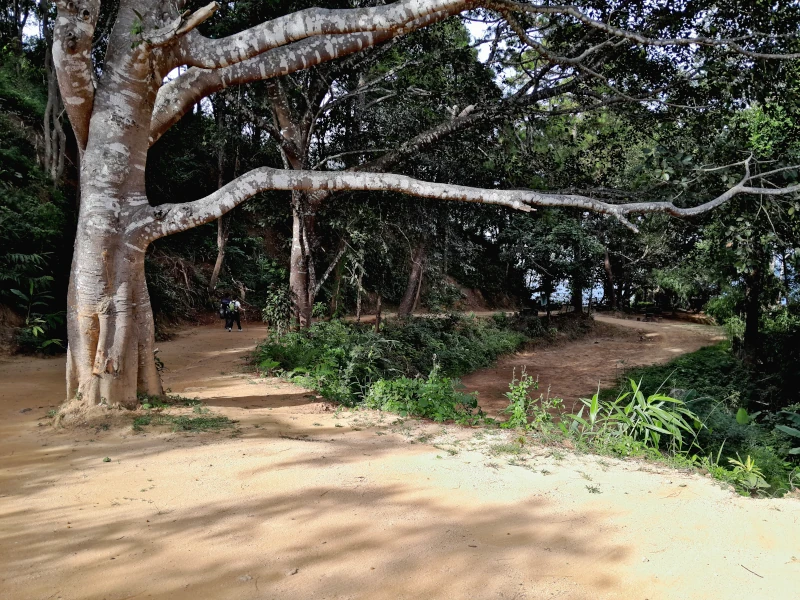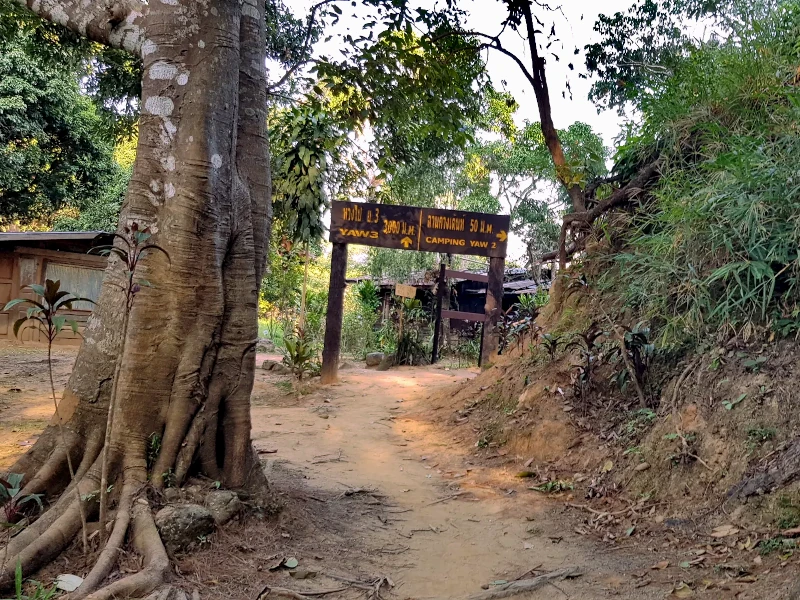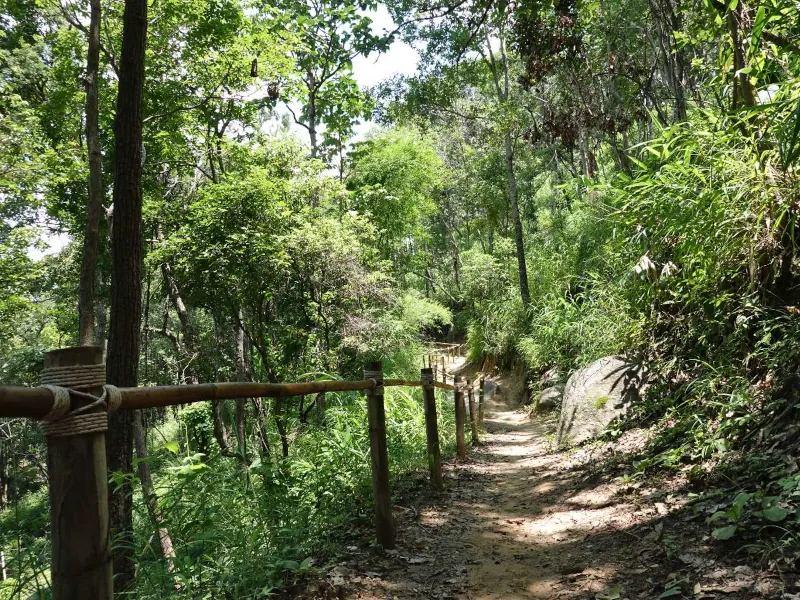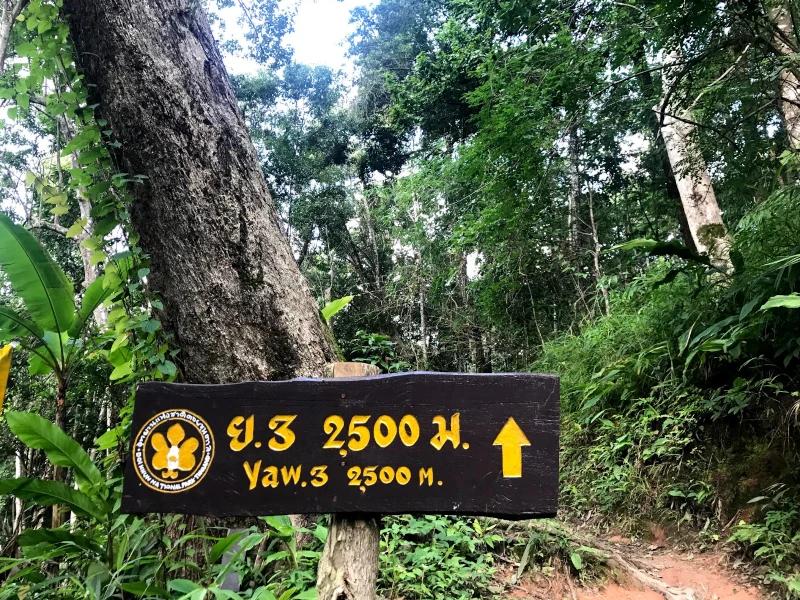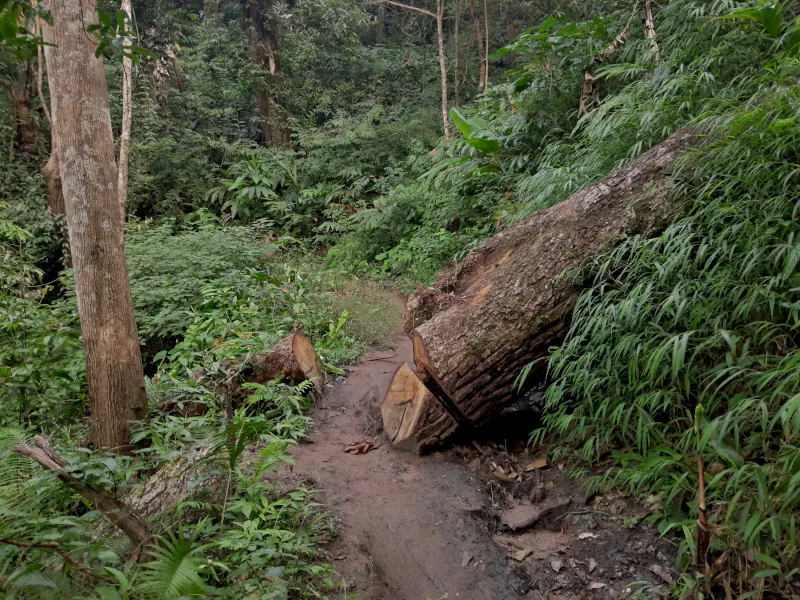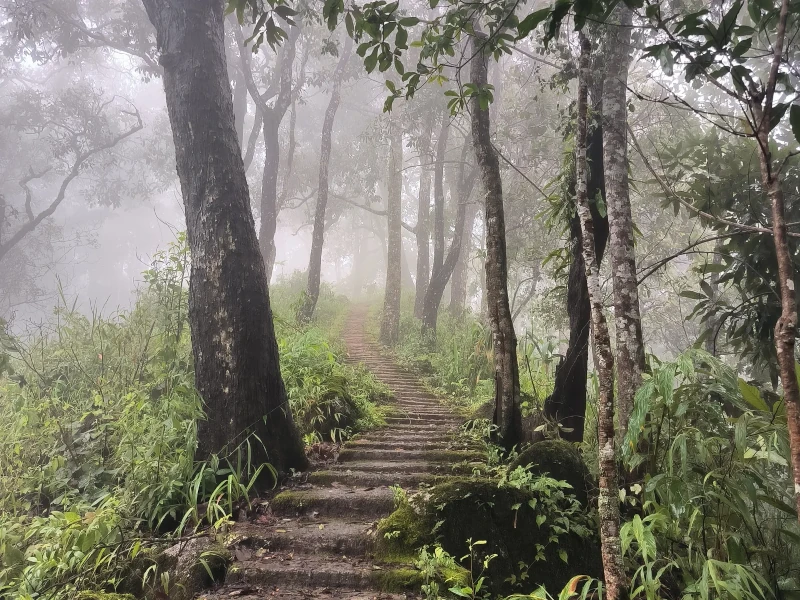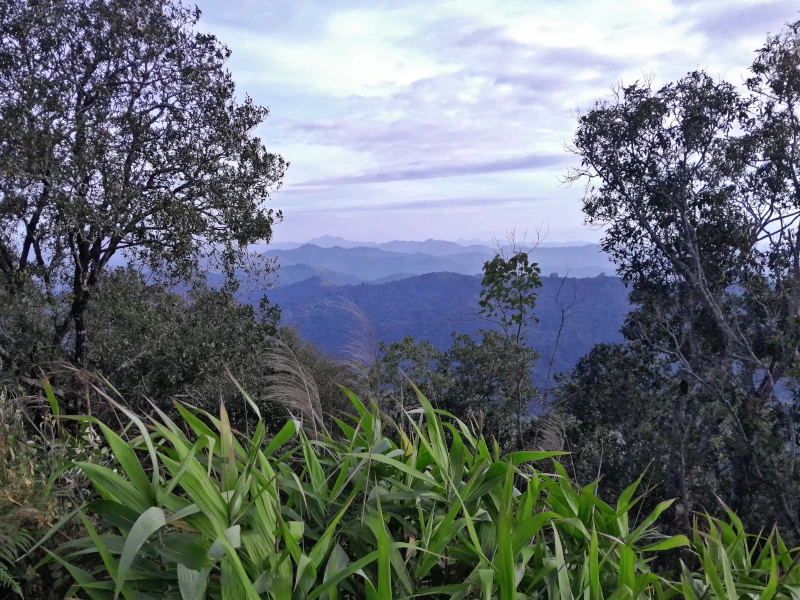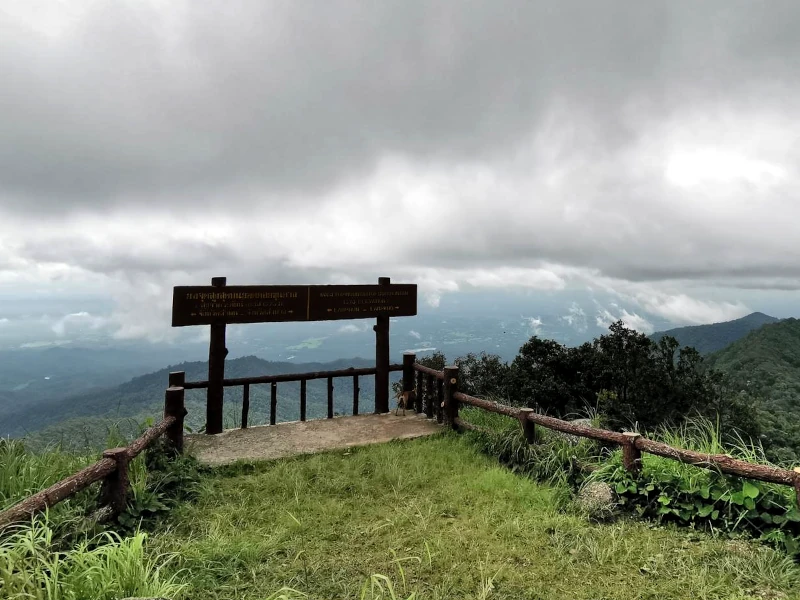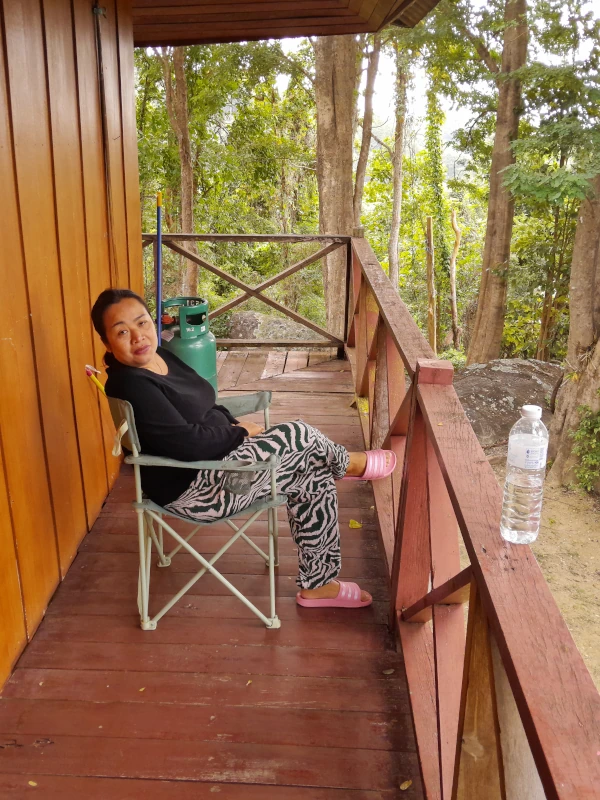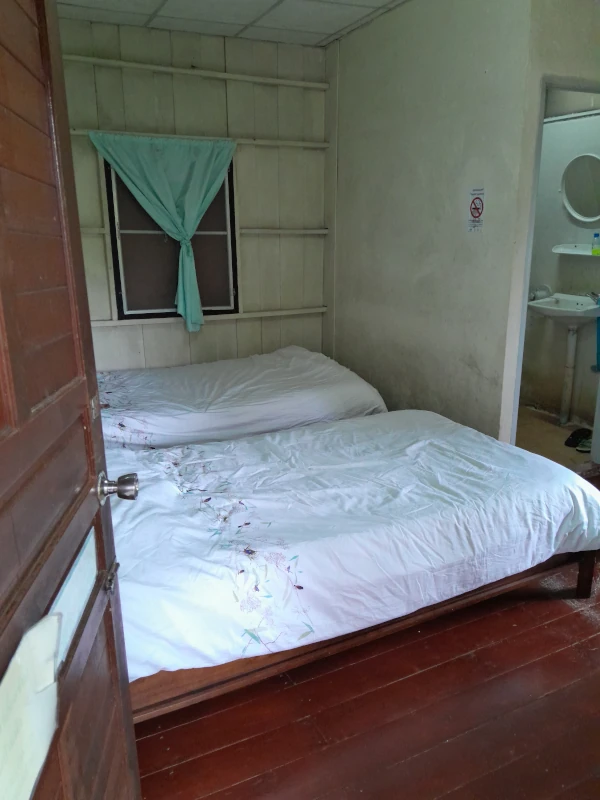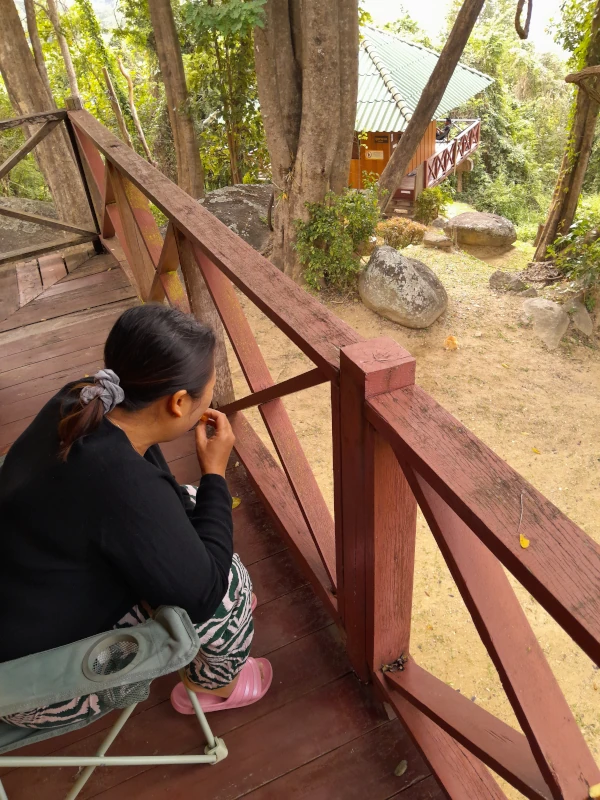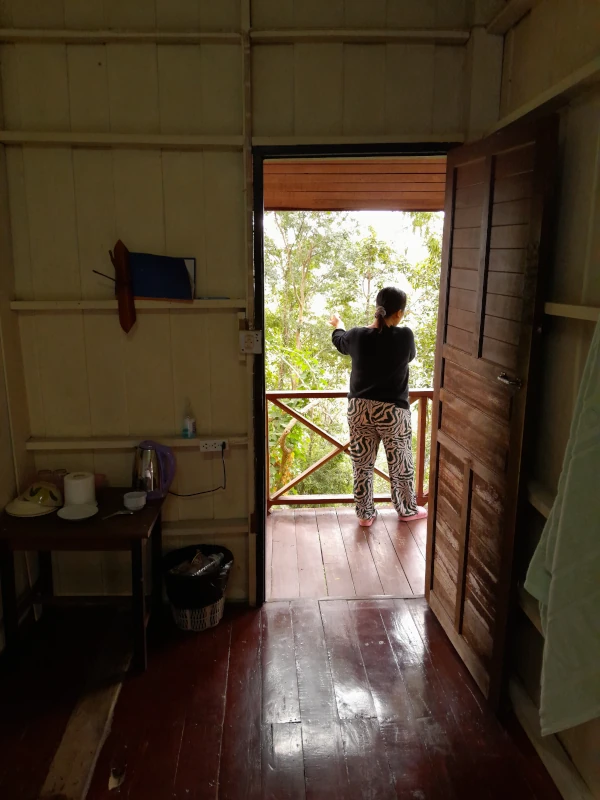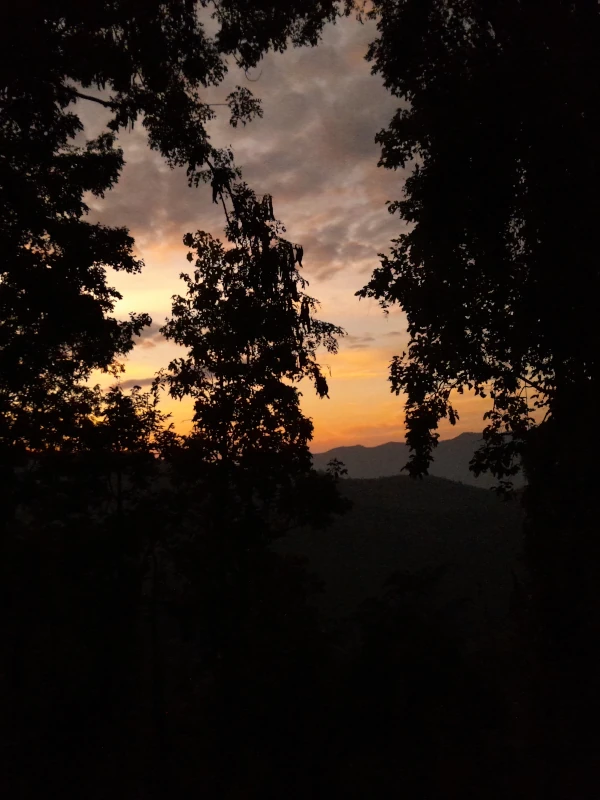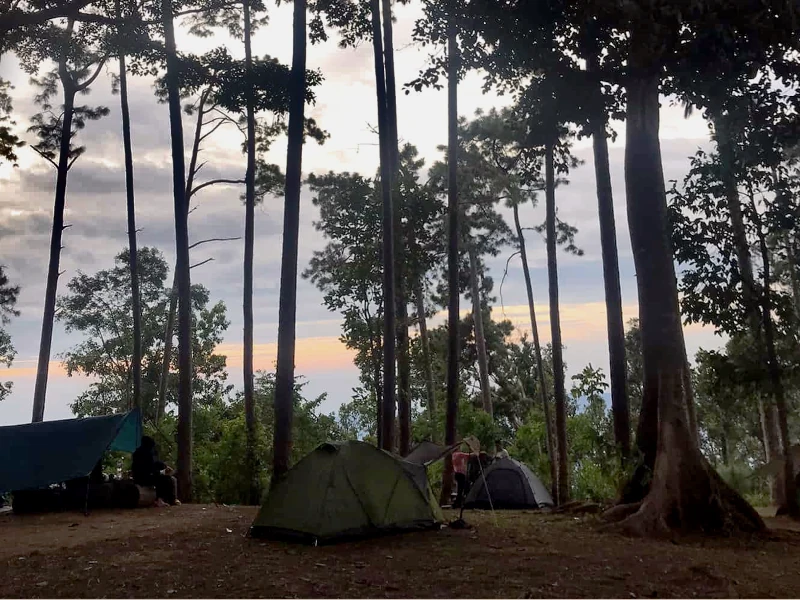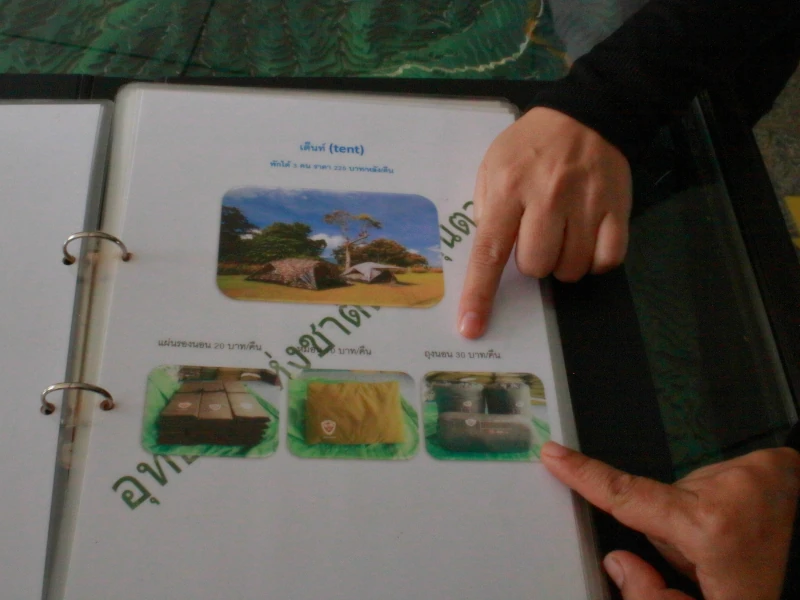Lanna Atlas / Hiking / Doi Khun Tan
A well-maintained 5.1 km hiking trail in Doi Khun Tan National Park leads to a summit with stunning views of the surrounding mountains. Its gentle terrain and easy transport accessibility make it popular among Thai hikers, campers, and even those without extensive hiking experience.
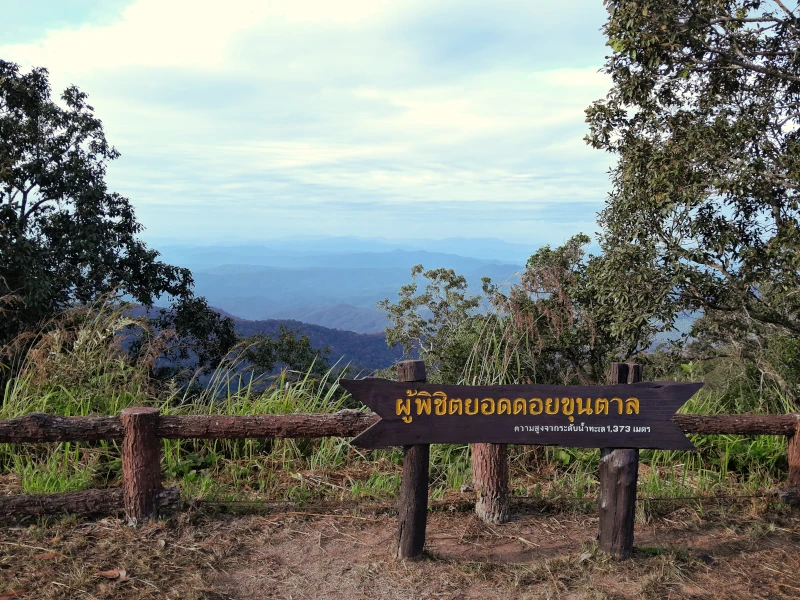
About Doi Khun Tan National Park
The park spans a rugged and intricate mountain range, straddling the borders of Lamphun and Lampang provinces. Beneath this range lies Thailand’s longest railway tunnel, part of the line connecting the country’s northwest to Bangkok. During World War II, the highest point in the area, Doi Khun Tan Peak, served as the army’s observation point. The military road built to access the peak later became a nature trail, and the former guard posts, abbreviated as JAW in Thai, were converted into camping sites along the route—still officially designated as JAW-1, JAW-2, and JAW-3.
Thanks to its proximity to the railway, Doi Khun Tan National Park has become one of Thailand’s top hiking destinations, at least for Thai campers and hikers. Many visitors from Bangkok travel here on the overnight train for weekend getaways. They often camp overnight, hike to the peak in the early morning darkness to catch the sunrise and witness the spectacular “sea of fog,” and then return to Bangkok in the afternoon, not forgetting to take photos in front of another highly Instagrammable local spot—the Tunnel.
Somehow, this park remains relatively unknown among foreign tourists, despite being just an hour away from Chiang Mai by train—eliminating the need for a taxi or a car with a driver. All trains departing from Chiang Mai stop at Khun Tan station to check their brakes before entering the tunnel.
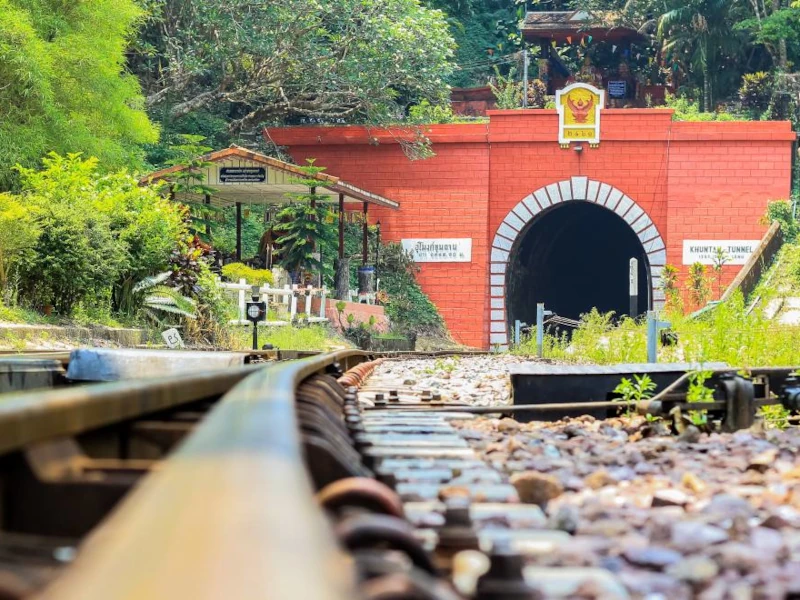
Doi Khun Tan Hiking Trail
The main nature trail in Doi Khun Tan National Park begins at the Trailhead Booth, situated at the end of a 2-kilometer asphalt road that winds uphill from the visitor center. Trail access closes at 5:00 PM but appears to open well before dawn; I started my hike at 5:30 AM and found the attendant already at the booth, wishing me a safe journey. Before starting, I had to record my name and departure time in a logbook.
The trail spans 5.1 kilometers with an elevation gain of 1.4 kilometers, leading to the Doi Khun Tan observation deck. To return, hikers follow the same path back. The hike typically takes 2–3 hours one way, and I completed the round trip at a leisurely pace in about 4 hours. Upon passing the Trailhead Booth on the return, I was asked to record my return time next to my name in the logbook.
The Doi Khun Tan nature trail is well-maintained and easy to navigate, featuring a clear, shaded path with covered rest areas and toilets. The trail between JAW-1 and JAW-2 starts off resembling a paved city park path but gradually transitions into a jungle trail as the elevation increases. Despite being moderately steep in places, the trail is accessible even to those with minimal hiking experience.
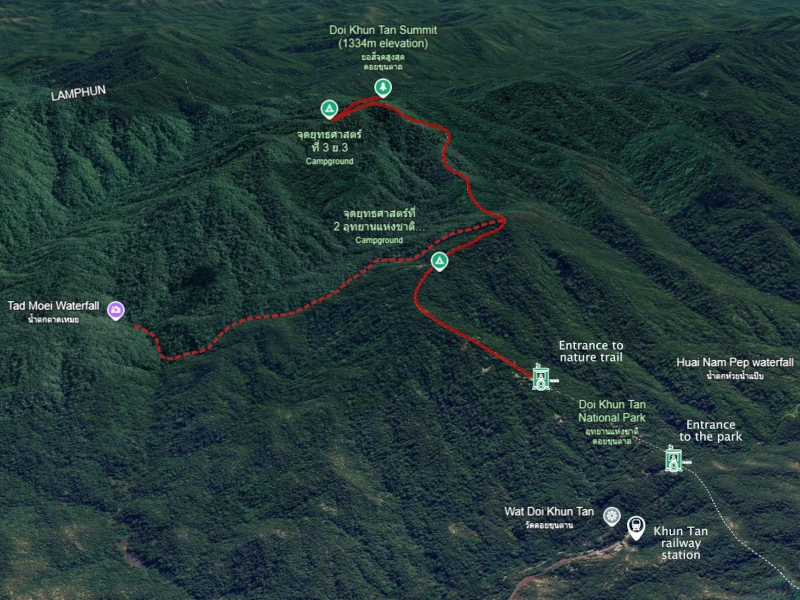
If you feel up for more of a challenge, consider extending your hike to include a visit to Tad Moei Waterfall. The detour to the waterfall branches off from the main trail approximately 500 meters past JAW-2 and is marked with signs. This route involves a relatively steep 1.7-kilometer descent to the waterfall, followed by an equally steep climb back to rejoin the main trail.
Previously, the waterfall could also be accessed via a trail starting halfway between the visitor center and the Trailhead Booth, but as of our visit in November 2024, that trail was closed. Between us, the waterfall isn’t particularly remarkable—I’ve been there before.
Getting There
By car or bike
We traveled to Doi Khun Tan National Park by car. The distance from our home in Chiang Mai to the park gates (Google Maps) was 75 kilometers, most of which was on the Chiang Mai – Lampang highway. Along the way, it’s worth stopping for photos near the White Bridge (Saphan Khao). The road was excellent everywhere, except for the last few kilometers before the park checkpoint.
By train
The classic way is to take the train along the northern railway line and get off at Khun Tan Station.
You can find train schedules and ticket prices on the State Railway of Thailand’s website. But if you’re already in Chiang Mai, simply head to the train station early in the morning to purchase a ticket for the next available train. This can be either an express train for 50 baht (approximately 1 hour travel time) or an authentic local train for 15 baht (around 1.5 hours). Be sure to bring your passport.
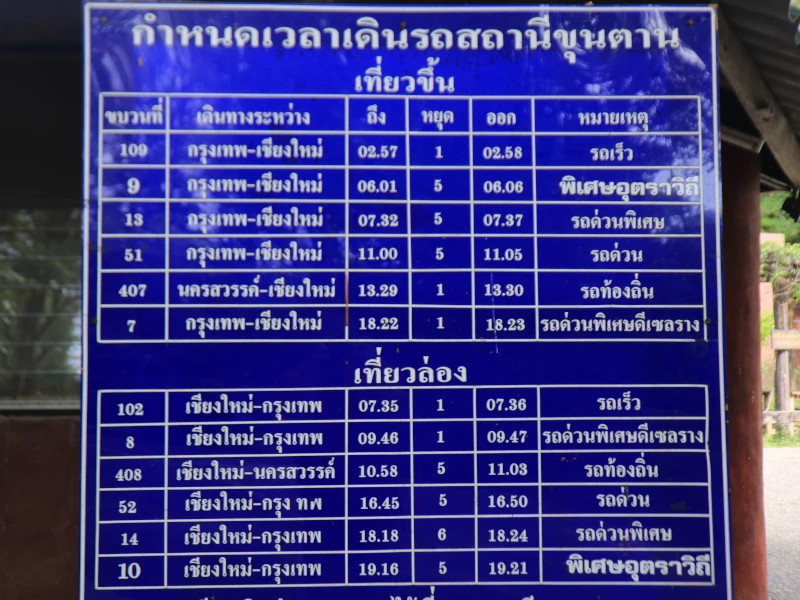
Upon arriving at Khun Tan Station, take your time before heading to the park. The seasoned travelers stock up on essentials here, such as bottled water, Thai snacks (like Sai Ua Northern Thai sausages), fresh fruit, and ready-made meals in lunch boxes. Remember that cooking is prohibited in the park, and the only on-site restaurant (which also serves as a small store) has very limited options and closes at 3:00 PM.
The station and nearby tunnel are worth exploring while waiting for your return train.
What is interesting about Khun Tan Station and the tunnel
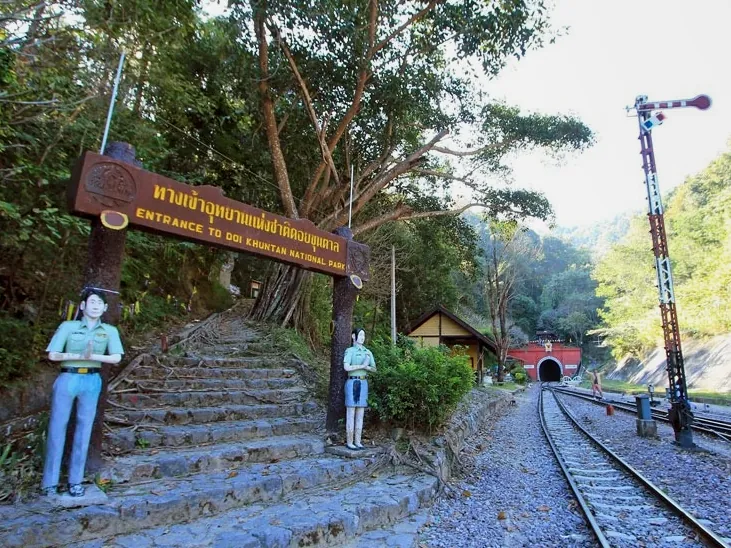
To enter the park, cross the railway tracks and walk through the grand entrance archway of Doi Khun Tan National Park. You’ll be greeted by two mannequins of uniformed officers standing in a respectful wai gesture. From there, follow the steep but well-marked 1.3 km path to the park’s main gate.
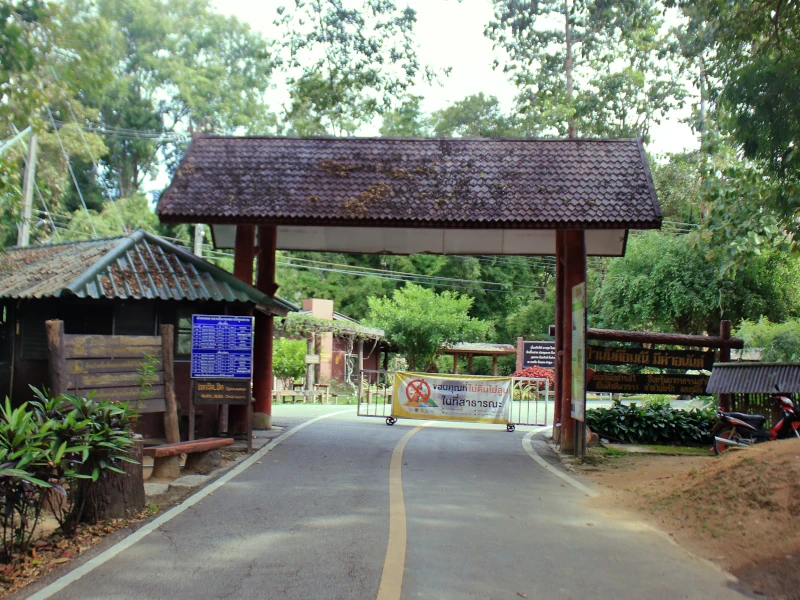
The park opens daily from 8 am until 6 pm. The ticket office is located at the main gate, and the entrance fee is 100 baht per foreign adult, 20 baht per Thai adult, and THB 30 per car. The ticket remains valid for several days if you stay in a tent or bungalow in the park.
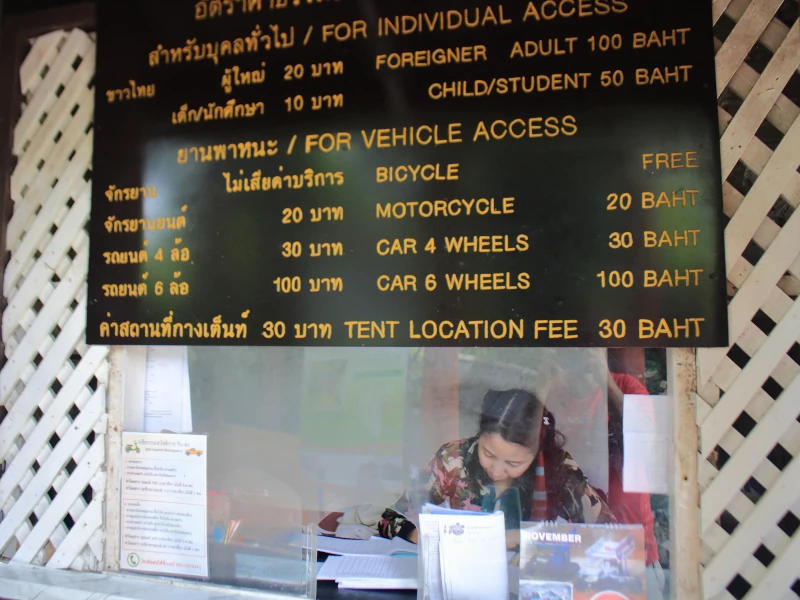
If you don’t plan to stay overnight in the park, walk another two kilometers up a winding asphalt road to the Trailhead Booth. Alternatively, park rangers are known to offer rides to the nature trail for 50 baht per person.
Accommodations
Just outside the park entrance is the visitor center, where staff can assist you in finding accommodations. They’ll show you an album with photos of the available options for the day.
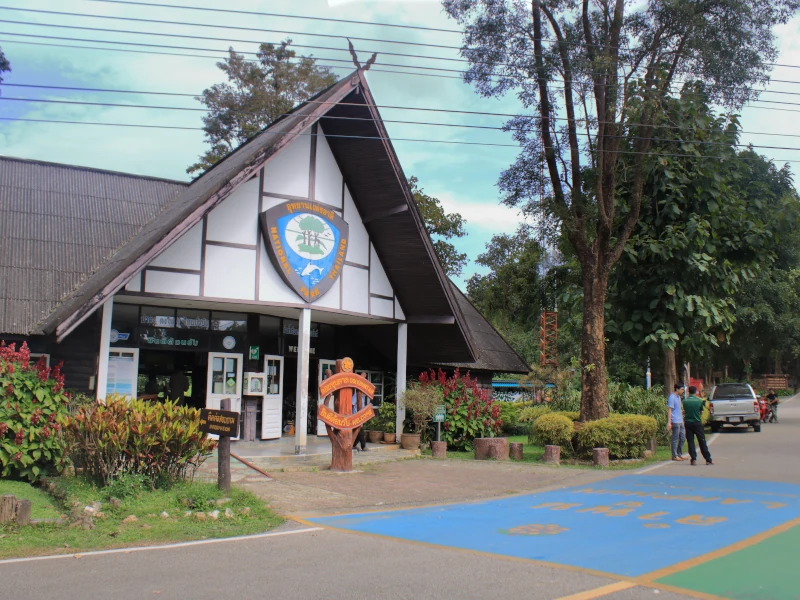
Bungalows
Several dozen wooden bungalows line the road leading to the Trailhead Booth. Depending on the number of people and the size of the bungalow, prices per night range from 500 THB to 2700 THB. The bungalows can be booked in advance on the website of the Department of National Parks.
For our visit, there were two of us traveling by car, with one planning an early morning hike to the summit. We chose a modest bungalow for two, conveniently located near the trailhead and with parking right outside. It was simple but functional, featuring two beds, a wall fan, and a small table with a kettle. The bathroom was equipped with a gas water heater. The folding chairs we brought with us.
The cost for our bungalow was surprisingly low—only 350 baht per night! While the regular price is listed as 500 baht, there is a discount from Monday to Thursday, as noted on our receipt.
Camping
Single-person tents (150 baht) and double tents (225 baht) are available for rent at the visitor center, along with sleeping bags (30 baht), sleeping mats (20 baht), and pillows (10 baht). The cost of renting a complete camping set for one person is roughly equivalent to renting a bungalow. Many people rent tents to save time during the ascent and ensure they reach the summit in time for sunrise.
Details
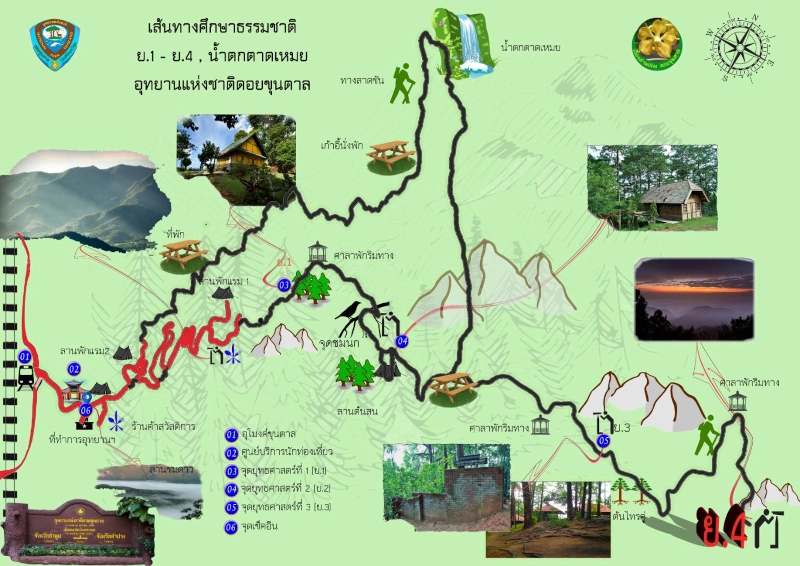
Time to Visit
The park is especially popular among hikers during the cool season from November to February when the northeast monsoon brings crisp temperatures and sunny days. Overnight temperatures can drop to 7°C, so campers should come prepared, while daytime highs reach a pleasant 23°C.
In the hot season (April to June), overnight stays on the nature trail are prohibited.
Roman Brunner

